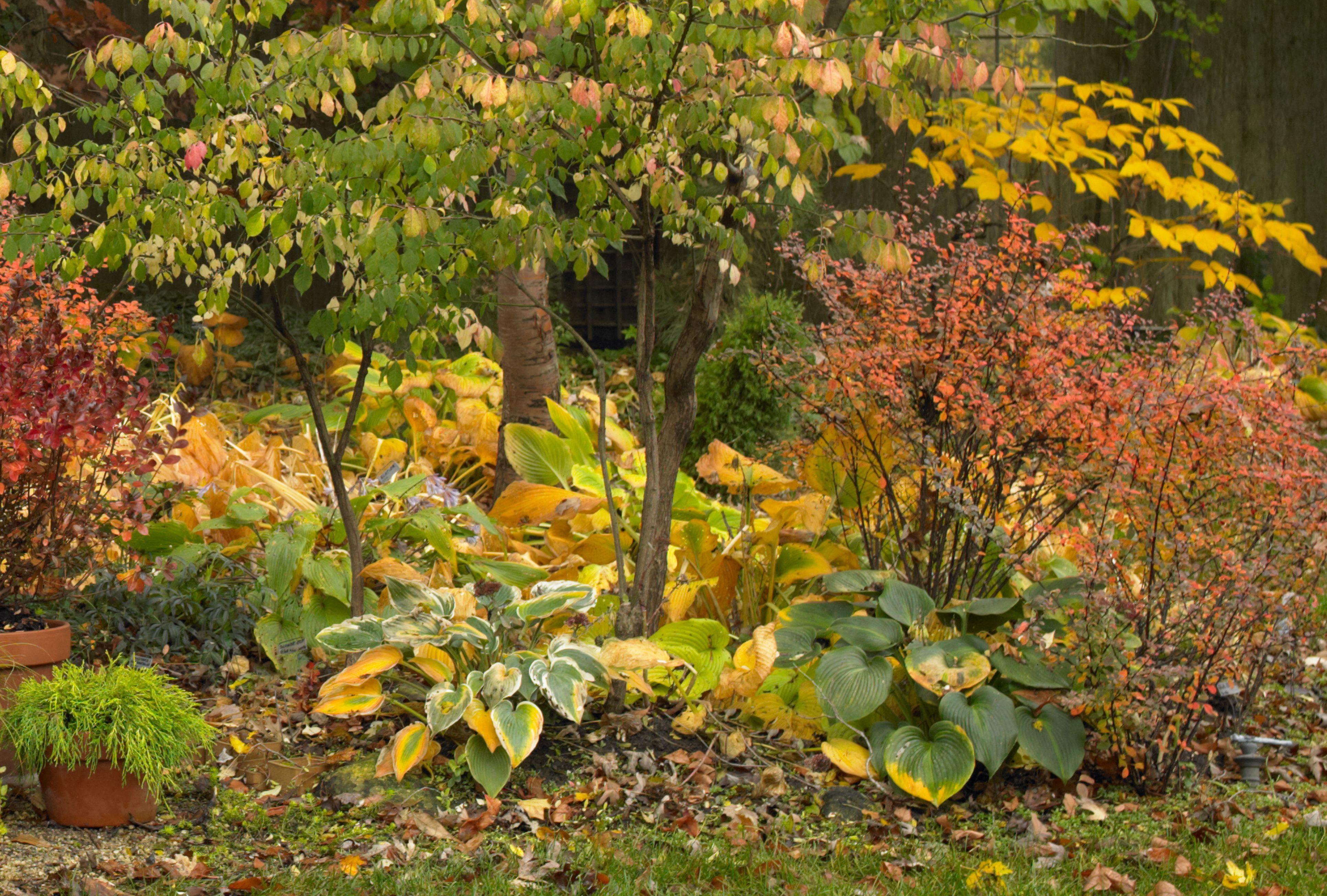Key Takeaways
- Cutting back hostas too soon in fall can limit root growth needed to survive winter.
- Removing hosta leaves before winter helps reduce pests and diseases in spring.
- After a hard freeze kills the foliage, trim stems back to 2 inches.
Hostas often turn golden yellow, soft orange, and muted brown in autumn, echoing the trees around them. Enjoy their warm hues for a little while, but then get your pruning shears ready. It's best to cut back hosta foliage before winter arrives—but you shouldn't prune them too early in fall either. This guide explains exactly how and when to cut back hostas to help your plants avoid pests and other issues over the winter.
Why to Cut Back Hostas in Fall
Unlike many perennials, hostas should be cut back in the fall because experts consistently find that fall cleanups help control the diseases and pests that commonly attack this perennial. If left standing, decaying leaves can attract rodents, like voles, by providing a cozy winter home. Slugs also may overwinter in the leaves, emerging in spring to feast on new growth.
Hostas are also susceptible to nematodes and various viruses, but discarding the foliage after a hard freeze can prevent these problems from taking hold.
When to Cut Back Hostas
It's important not to rush your fall cleanup. If hosta foliage is still alive, so is the plant’s growth below ground. Cutting them back too early can hinder the root development that supports the plant through winter and into spring.
The best time to cut back hostas is after a hard freeze has killed the foliage—and there may be several brief frosts before a hard freeze does the job. Many hostas, particularly those with thicker leaves, will remain standing through the initial light frosts of fall. It's only when a hard freeze hits that the leaves collapse around the plant’s crown. This leaf pile indicates it's time to grab your pruners and start clearing away the foliage.
Peter Krumhardt
How to Cut Back Hostas
To cut back hostas, use sharp bypass pruners and trim the foliage to about 2 inches above the soil. For efficiency, grab a large bunch of stems in one hand and cut with the other. The short stems left behind will act as a marker to avoid disturbing the plant in spring.
If your hostas show signs of disease, like mottled leaves or a puckered surface, make sure to disinfect your pruners. Clean them between each plant using rubbing alcohol or a 10% bleach solution. Then, be sure to throw away any diseased foliage rather than adding it to your compost pile.
Related
Fall Hosta Care Tips
Hostas are easy-care shade perennials, but they do benefit from a little maintenance in fall.
1. Time it right.
Keep an eye on your hostas as fall progresses. As soon as the foliage is limp from the first hard freeze, cut back the stems to 2 inches above the soil line.
2. Be mindful of disease.
Avoid spreading disease while trimming hostas. If you suspect disease, disinfect your pruners between plants. Use rubbing alcohol wipes for a quick and efficient cleaning process.
3. Clean up leaves.
After trimming hostas, keep an eye out for fallen leaves from nearby trees or shrubs that might accumulate around the cut stems. Every week or so, clear these leaves and add them to your compost pile. Piles of damp leaves can lead to rot and mold, damaging the plants over winter.
4. Mulch fall-planted hostas.
For fall-planted hostas, use a 4-inch layer of shredded bark mulch over the cut stems. This mulch acts as an insulating layer, protecting the plant from freeze-thaw cycles. Just remember to remove the mulch in early spring before new growth starts.
5. Consider pest pressure.
If small critters like voles or mice are an issue in your garden, protect the delicate hosta stems and crowns, which these animals might see as dinner during colder months. Consider covering your plants with hardware cloth to keep them safe.



